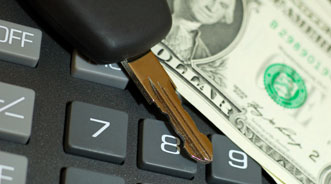Analysts: Latest Subprime Loan Jump Benefits Dealers and Investors

As subprime auto lending gains more steam — by as much as 20 percent in some instances — analysts from NADA Used Car Guide and Fitch Ratings explained how the latest movements are benefiting dealers and investors.
When it comes to moving new metal, Jonathan Banks, executive automotive analyst with NADA Used Car Guide, recently noted that credit availability to subprime buyers is up "by about 20 percent on the new-car side.
"This drives more people to dealerships. They’re able to get vehicles. They’re able to trade in vehicles. And they’re getting really low interest rates," Banks noted during a recent episode of "AutoFocus with David Hyatt," an online production of the National Automobile Dealers Association.
Meanwhile, when it comes to turning used models, Banks emphasized, "We’re finding this on the used-car market, as well.
"Financing is readily available, and interest rates are better than they’ve ever been," he added.
Looking from the investor side of the equation, Fitch’s recent industry commentary mentioned that steady improvement in U.S. auto loan asset quality continued in the second quarter, even as lending standards at banks and captive finance companies eased somewhat and used-car values fell slightly.
Fitch is expecting robust loan demand and good liquidity in the capital markets to fuel further auto loan growth in the near term, "but emerging competition, continued normalization of underwriting standards and moderating used-car prices will likely lead to a modest weakening of credit metrics over the next year."
Fitch recapped that the Federal Reserve’s most recent senior loan officer survey highlighted auto loans as an area where lenders have reported some easing in credit standards during the past three months.
The Fed reported that 23 percent of banks surveyed loosened application standards for individuals seeking auto financing over the last quarter.
Survey respondents reporting eased credit terms noted that most changes were occurring in loan pricing with 32 percent of banks noting that auto loan spreads over the bank’s cost of funds narrowed over the last three months. Smaller fractions of lenders indicated that easing occurred in loan maturities and down payment requirements.
"Auto lender credit metrics are likely to weaken somewhat over the next year with further declines in used-vehicle values and normalization of credit trends," Fitch projected.
"However, metrics could deteriorate more quickly should larger lenders respond to emerging competition in the auto finance space by significantly loosening underwriting standards," analysts continued. "We would view such developments negatively, but to date no evidence of a broad-based change in underwriting standards has appeared.
"While some normalization of credit metrics is likely, we do not expect auto lenders to report substantially weaker credit performance in the back half of the year," Fitch officials went on to say.
Finally, a Reuters report pointed out that investors being dubbed as "yield-starved" are moving toward products that incorporate more risk, resulting in demand that is enabling companies that securitize subprime auto receivables to achieve "super-low" funding costs.
The Reuters report mentioned Santander Consumer USA issued a new deal with a weighted average credit spread of 1.329 and an all-in yield of 1.847 percent — what the account contended was the lowest yield achieved by any subprime auto ABS issuer since the financial crisis.
"Auto ABS investors need yield that comes from an asset class with improving credit metrics on top of a solid deal structure," independent portfolio manager Jim Harrington told Reuters.
"This subprime credit dynamic is occurring against the backdrop of an ever-improving and growing auto consumer credit," Harrington added.

 View The Latest Edition
View The Latest Edition

